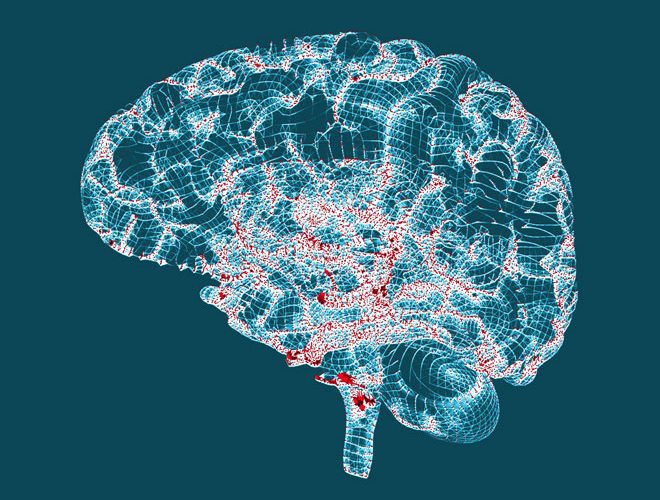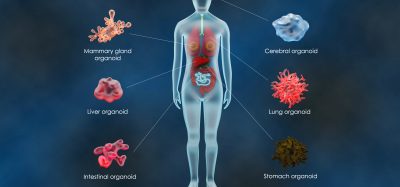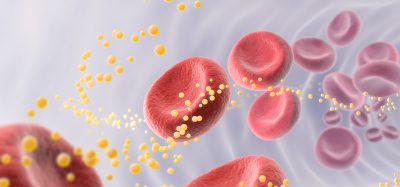The future of central nervous system research
Central nervous system (CNS) research is making breakthroughs with innovative therapies and next-generation technologies. Researchers are now able to use human tissue to identify relevant novel drug targets and biomarkers for a broad range of CNS diseases including schizophrenia, Alzheimer’s disease and Parkinson’s disease. As our understanding of the brain evolves, we expect to see further exciting discoveries and advancements in the future.


The world needs better treatments for neurodegenerative diseases and other brain disorders. Despite decades of research and development, there are currently no drugs that can prevent or cure these diseases and only limited options for symptomatic relief. However, recent advances in genomic profiling, brain imaging, disease biomarkers and circuit mapping have shed new light on the intricacies of the normal and diseased brain. This deeper understanding has enabled the development of numerous potentially breakthrough therapies, which are currently being tested in the clinic.
Over the last few years, advancements in neuroimaging techniques like magnetic resonance imaging (MRI) and positron emission tomography (PET), in tandem with imaging agents and biomarkers, have provided a wealth of information and insights into the function of healthy and diseased human brains. Radiotracers make it possible to identify disease pathology and track disease progression using scans. In Alzheimer’s disease, tracers such as 18F-flortaucipir, which binds to tau tangles, and 18F-florbetapir, 18F-flutemetamol and 18F-florbetaben, which bind to amyloid beta plaques, provide a non-invasive way to follow disease progression in patients.1,2 Furthermore, imaging has been bolstered through the implementation of artificial intelligence and machine learning to decipher new patterns and trends. These findings have helped to determine an individual’s risk of developing Alzheimer’s disease, track disease progression, identify new patterns of pathology, and evaluate the efficacy of novel therapeutics.3,4 Click or tap here to enter text.
As scientists continue to elucidate and advance novel drug targets and technology applications, the goal of bringing impactful treatments to patients becomes more of a reality.
Finding efficacious novel targets is one of the biggest challenges in CNS drug development. Because animal models for neurological disorders do not recapitulate all aspects of human disease and cannot capture the heterogeneity of disease across individuals, recent work has focused on better understanding human diseases directly by using human samples. Notably, genomic profiling methods have helped prioritise putative drug targets by identifying genes that change in disease or genetic loci that enhance or protect from disease risk. For example, genome-wide association studies (GWAS), which involve analysing the entire genome of large groups of people to identify genetic variations associated with a particular disease, have led to the identification of potential drug targets, such as beta-secretase 1 (BACE1) for Alzheimer’s disease, and LRRK2 for Parkinson’s disease.6,7Click or tap here to enter text.
Biomarkers are redefining how precision therapies are discovered, validated and delivered.
This exclusive expert-led report reveals how leading teams are using biomarker science to drive faster insights, cleaner data and more targeted treatments – from discovery to diagnostics.
Inside the report:
- How leading organisations are reshaping strategy with biomarker-led approaches
- Better tools for real-time decision-making – turning complex data into faster insights
- Global standardisation and assay sensitivity – what it takes to scale across networks
Discover how biomarker science is addressing the biggest hurdles in drug discovery, translational research and precision medicine – access your free copy today
At Cerevance, we are working to elucidate the molecular underpinnings of neurological diseases through cell type-specific transcriptomic and epigenomic profiling of post-mortem human tissue;8 to date, we have assembled a collection of over 13,000 brain tissue samples covering a range of diseases including Alzheimer’s and Parkinson’s disease, as well as neuropathologically normal controls, and generated close to 10,000 high quality omic datasets. By applying a broad range of analysis methods, including machine learning, we have discovered cell type-specific gene signatures that accompany disease progression and neurodegeneration.
Leveraging these insights has allowed us to identify completely novel drug targets and biomarkers, and to develop new compounds for Parkinson’s and Alzheimer’s disease, ALS and schizophrenia.
In summary, CNS research is a rapidly evolving field with a multitude of exciting developments and breakthroughs. The field continues to uncover the complexities of the brain and provide insights into neurodegenerative diseases, and great strides are also being made in areas like imaging technology, genomic profiling and drug development.
As scientists continue to elucidate and advance novel drug targets and technology applications, the goal of bringing impactful treatments to patients becomes more of a reality.
Author bio:


Xiao Xu is a co-founder of Cerevance, a company that is discovering new treatments for brain diseases. In her postdoctoral work with Nathaniel Heintz at The Rockefeller University, Xiao developed the NETSseq technology platform, which Cerevance is using to comprehensively profile specific brain cell types in post-mortem human brain tissue. These studies have enabled identification of novel targets and development of new therapeutics for diseases including Parkinson’s and Alzheimer’s. Before Rockefeller, she worked on gene expression networks in ageing during her PhD at Stanford University.
References
- Lemoine L, Gillberg PG, Svedberg M, et al. Comparative binding properties of the tau PET tracers THK5117, THK5351, PBB3, and T807 in postmortem Alzheimer brains. Alzheimers Res Ther. 2017 Dec 11;9(1).
- Kong L, He Q, Li Q, et al. Rapid progress in neuroimaging technologies fuels central nervous system translational medicine. Vol. 28, Drug Discovery Today. Elsevier Ltd; 2023.
- Kavitha C, Mani V, Srividhya SR, et al. Early-Stage Alzheimer’s Disease Prediction Using Machine Learning Models. Front Public Health. 2022 Mar 3;10.
- Qiu S, Joshi PS, Miller MI, et al. Development and validation of an interpretable deep learning framework for Alzheimer’s disease classification. Brain. 2020 Jun 1;143(6):1920–33.
- Wightman DP, Jansen IE, Savage JEet al. A genome-wide association study with 1,126,563 individuals identifies new risk loci for Alzheimer’s disease. Nat Genet. 2021 Sep 1;53(9):1276–82.
- Sims R, Van Der Lee SJ, Naj AC, et al. Rare coding variants in PLCG2, ABI3, and TREM2 implicate microglial-mediated innate immunity in Alzheimer’s disease. Nat Genet. 2017 Sep 1;49(9):1373–84.
- Grenn FP, Kim JJ, Makarious MB, et al. The Parkinson’s Disease Genome-Wide Association Study Locus Browser. Movement Disorders. 2020 Nov 1;35(11):2056–67.
- Xu et al. (doi: 10.7554/elife.37551)
Related topics
Drug Delivery, Drug Development, Drug Discovery, Drug Discovery Processes, Targets
Related conditions
Alzheimer's, Parkinson's disease
Related organisations
Cerevance
Related people
Xiao Xu









I stopped most of my Parkinson’s disease medications due to severe side effects and I started on herbal treatments from Natural Herbs Centre (naturalherbscentre. com), the treatment has made a very huge difference for me. My symptoms including body weakness and Swallowing difficulties disappeared after few months on the treatment. I am getting active again since starting this treatment.